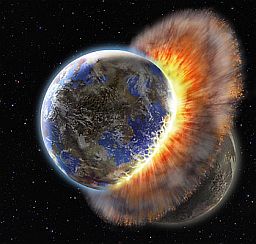23. Define catastrophism and creationism.
From SJS Wiki
Return to History 8 Archaeology Manual Assignments
CATASTROPHISM
- Catastrophism is the argument that Earth's features— such as mountains and lakes —were mainly produced as a direct effect of recurrent,sudden, and violent forces instead of progressive transformations that happen over prolonged periods of time. The formation of this theory first began during the late 18th and early 19th century by a German mineralogist by the name of Abraham Gottlob Werner. He suggested that rocks were formed by fast chemical rains that had come from a "world ocean."Another advocate of this theory is Georges Cuvier. He believed that many animals had died from large disasters. Both of their thoughts, derived primarily from Bishop James Ussher's work, Annals of the World, suggested that catastrophes followed by long periods of inactivity created the world that exists today. According to this theory, for example, the origins of the Rocky Mountains, the Appalachians, or the Alps would have resulted from a huge earthquake that uplifted them in swifty. Strict catastrophism would also imply that lakes had been formed by sudden storms and similarly, valleys by huge drops in the ground.


CREATIONISM
- Creationism is a principle or theory claiming that everything- all matter, all forms of life, and the Earth were created by God out of nothing. Creationism in a more restricted sense requires a number of beliefs. One of these encompasses a very short amount time since the beginning of all things. Because of this, ‘Young Earth Creationists’ believe that Archbishop Ussher's sixteenth-century calculation of about 6000 years is the correct estimate for the Earth's age; that there were six days of creation, and that there was a miraculous creation of all life, including human beings.


Bibliography for Information: [[1]] [[2]] [[3]] [[4]] CF Manual(page 9)
Bibliography for Pictures: [5] [6] [7] [8]
Grace Huang